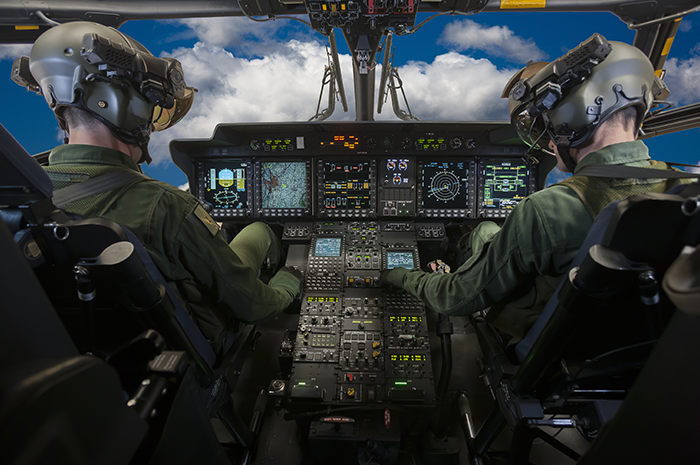Electronic warfare: the cornerstone of platform survivability
The aircrew has been briefed, the mission is clear: the helicopter is to fly deep into enemy territory to provide air support for ground troops in a sticky situation. As the crew straps in and prepares for take-off, they know they'll be flying into the unknown. Despite the detailed intelligence gathered beforehand, there's no knowing what they'll encounter: enemy surveillance systems may have been redeployed, short-range missile systems and rocket launchers may have been concealed behind terrain features, or a makeshift drone could be flown into the helicopter. The helicopter's self-protection system needs to perform in order to guarantee the mission success and bring them back to base safe and sound.
Finding the right compromise without compromising the mission
The increasing variety of threats encountered on a military operation present a formidable challenge to the onboard systems that ensure platform survivability, especially now that helicopters are designed to fly multiple types of missions in a whole range of different deployment scenarios.
This multi-mission capability leads to compromises. Designers have to find just the right balance between operational capability and installability of all the equipment needed to deal with each type of threat. The final system configuration has to ensure the safety of the crew and maximise the chances of mission success at the same time.
Thales has worked with customers for several decades to develop the electronic warfare systems needed to protect aircrews from all types of dangers. "Thales is constantly looking for the optimal solution to protect platforms of all types, from tactical transport planes to more versatile light helicopters, by equipping them with high-reliability, high-performance defensive aids systems. Aircrews need to know they can trust the system designed to save their lives if the aircraft comes under attack," says Patrick Agnieray, Director, Radar EW Product Line Thales.

Speed is of the essence
As well as installing the right self-protection systems to ensure platform survivability, reaction times are a crucial factor in electronic warfare. Aircraft self-protection systems need to alert pilots instantaneously if a critical threat is declared so they are ready to take appropriate action when needed.
Thales defensive aids solutions are designed to be seamlessly integrated with the cockpit avionics, so the pilot receives information and interacts with the self-protection system without having to use a different screen. "That reduces the cognitive load on the pilot," says Guillaume Bouillin, Self Protection Systems Product Manager Thales, "but it also makes it much easier to install the systems in the cramped conditions of an helicopter cockpit."
Thales self-protection systems also draw on the company's proven operational experience to optimise sequence programming and analyse the data recorded during the flight. Based on this detailed knowledge of threat characteristics and the ability to deploy the best countermeasures to defeat each type of threat, Thales systems provide consistent programming and analysis across an entire fleet of aircraft. And having worked hand-in-hand with operational users for many years, the company is able to adapt its systems as the threat environment evolves, while building on the legacy of its extensively proven defensive aids for aircraft of all types. "With self-protection systems they can really trust, pilots are able to focus 100% on the mission in hand," concludes Olivier Ageorges, ISR BL Operational Marketing Manager Thales.


